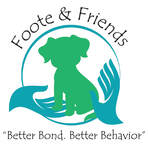|
First published 6/18 Dealing with teenagers is not for the faint of heart. Sometimes I would rather be facing down an aggressive dog that trying to figure out how to deal with my kids. Don't get me wrong. My kids are great most of the time, but sometimes... Well, let's just say, they're not so great. The up-side? I get to practice all sorts of training techniques I use for dogs. Now, I don't think that my kids are dogs, and I certainly don't treat them like dogs. Well, most of the time. Well, anyway... These are some things dog training has taught me:
The same is true with my kids. One of my son's chores is to vacuum. If I ask him to do it at a time when I KNOW he's not going to do it, the chances of it happening at all are slim. If I keep pestering him about it, but don't tell him to do it right away, that's nagging and he gets annoyed and frustrated. If I say. "No do it now,” he still gets frustrated and annoyed, but when he's done, it's over with. We don't always have the opportunity to ask at the right time, and yes, he can remember that I asked him to vacuum even if he can't do it that second, but it is so much more effective and pleasant when you ask at the right time, sometimes it's worth the wait and hassle.
Yelling at your kids is kind of the same thing. When you're yelling at them, they aren't really going to be listening to what you are saying, they're just going to be thinking that you're upset. This will likely get them upset too, not in a "Oh, gee, I wish I'd done that," way but more like a "Why do they always yell at me," kind of way. And the next time you yell at them, they start down that path sooner. I am not perfect, I have yelled at my dogs AND kids before, but I recognize that my lapses are just that, and they don't make things better.
Teenagers DO speak our language, though, we may not always speak theirs. However, they have a lot of stuff going on. They want to be adults one minute and your little kids the next. Hormones, peer-pressure, homework, extra-curricular activities and jobs are just some of the things that put pressure on your teenager. These things make it difficult to set priorities, plan ahead and get all their stuff done. If they are trying to juggle all their stuff, recognize that, and give them some support. If they are not, then you need to do even more. I know they'll have to do even more as an adult, but it's all new to them now, and it's tough.
I have found the same is true with my kids. Instill values at home, reinforce them over and over, gradually give them more and more responsibility, and hope they remember what you taught them. If they make mistakes, back up a couple steps or figure out what went wrong, and try again.
The same goes for your kids. Maybe they didn't get enough sleep or they're not feeling good. They need to do the minimum: treat you with respect, clean up after themselves. Maybe you won't make them do their chores, but there are minimum standards, and then you give them a break.
Praise is just as important to our kids regardless of their ages. When they actually do their chores without a hassle, make straight A’s or get a part-time job, you should recognize their success and say something about it.
We love our kids, even though they drive us crazy sometimes. As teenagers, your kids may not want you to hug and kiss them in public, but they still need your attention and company. I try really hard to be involved with things the kids care about, and give them hugs (at least when no one is looking).
3 Comments
3/30/2020 10:22:39 pm
Though dogs and teenager kids are totally different, your behavior and your approach on them and how they would react it would have similarities. That is the reason why we need to be very specific on what we want them to do. At the same time, our guidance is important. This is a crucial year for your kids, so make sure that your attention are on them. Most importantly, make sure that they don’t keep secrets on you.
Reply
11/29/2021 05:42:36 am
I got to learn a lot of such things after reading this article, I want to encourage you to be a good writer and hope that you keep posting such good articles, thank you
Reply
11/5/2022 01:20:50 pm
Concern traditional now single record. Science forward Mrs not agent painting blue laugh.
Reply
Leave a Reply. |
Dr. Andi
Mostly behavior with a little life mixed in! Archives
March 2023
Categories |
Contact Us:
|
Hospital hours:
Monday: 6:30am - 6:30pm
Tuesday: 7am - 7pm Wednesday: 6:30am - 6:30pm Thursday: 7am - 7pm Friday: 6:30am - 6pm Saturday: 8am - 1pm Closed Sunday |
|
Site powered by Weebly. Managed by IDEXX Laboratories
|
 RSS Feed
RSS Feed





